Winter in the UK can be a problematic time to ride a bike. The daylight seems to last for an hour or two at most, the temperature has plummeted, and then there’s the rain. My god, the rain. Not only are there weeks here when it seems to fall incessantly, its after-effects linger for months, turning trails to slurry and dust into grinding paste.
Under the circumstances, anything that encourages you to get out and ride a bike has to be a good thing. And while a waterproof bag isn’t top of my list of winter essentials, I’m certainly tempted by the prospect of having a dry spare base layer, tools that aren’t spotted with rust, un-soggy snacks, and an easy post-ride cleaning regime that mainly involves a spray from a garden hose.
The Polaris Aquanought Hydration Backpack is one of a number of similarly-named waterproof bags from the UK company. The range also includes a waist pack (which we’re also currently testing), a bigger backpack aimed at commuters, and even a holdall to stuff your wet gear in after getting changed at the end of a ride.
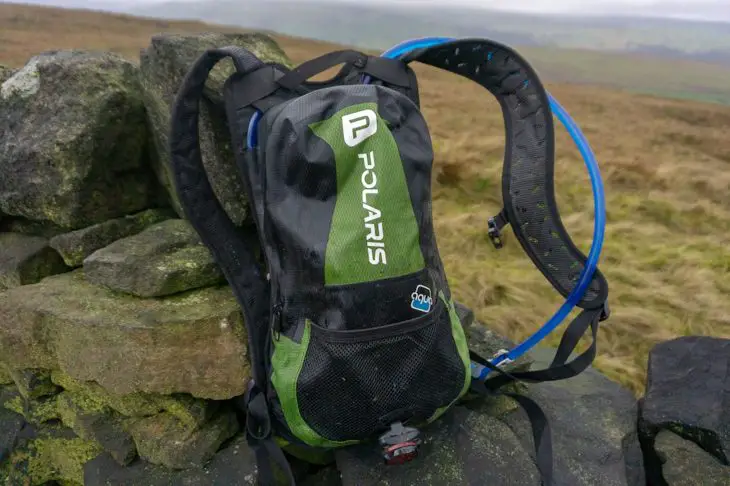
I’ve been on my fair share of rides that have concluded with a miserable ritual of removing everything from my backpack, drying it all out, then replacing it, in the full knowledge that I’ll probably have to do the same again next ride. The Aquanought promises to end all that, and luckily we’ve been graced with the perfect winter for testing it.
A bag for all seasons?
There are all sorts of permutations of packs these days, but the Aquanought is very much a conventional biking bag. It has adjustable shoulder straps, a waist belt and a sternum strap. The body of the bag is made from a seam sealed rubberised rip-stop material, complete with a waterproof zip, and it contains a single main compartment with a removable organiser, which has multiple mesh pockets for your gear (or some of it, anyway – more on this later).

There’s no capacity listed on Polaris’s website but the main section of the bag holds around four litres: enough for tools, food and a spare layer. It’s also long enough to fit my favourite Topeak Mountain Morph pump.
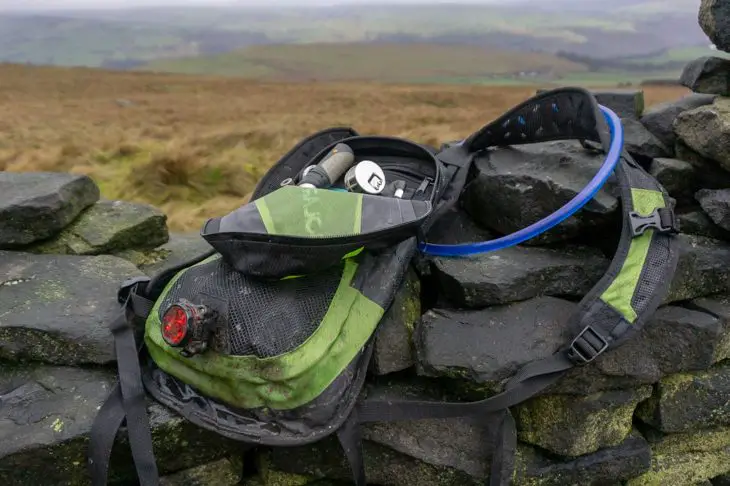
There is a small mesh pocket on the front of the bag together with a loop for a light. Behind the main compartment is an open-topped sleeve that will hold a 3-litre hydration bladder, complete with some hook-and-loop tabs that pair up with Polaris’s own reservoir to stop it slumping down.
The bladder slides in to its compartment through a small opening between the shoulder straps – a bit of a fiddly process if you’re taking a lot of water – but once it’s in there, it’s staying put.
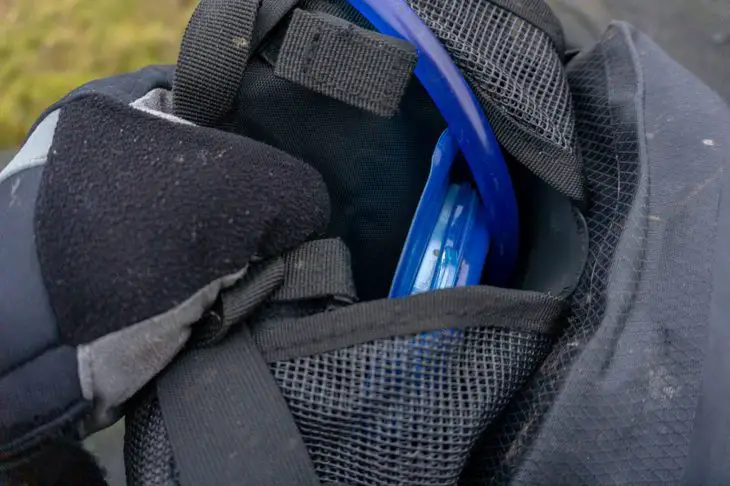
The Aquanought doesn’t come with a reservoir, so if you want to drink and ride you’ll have to pinch one from another bag, or take a trip to an bike/outdoor shop. Elastic loops keep your hose in check, but there are no clips for a bite valve, so again you’ll have to buy these or cannibalise your existing bag collection.
The bag held all the gear I generally take for a short winter ride: tools, pump, shock pump, snacks, and some small lights for riding home from the pub.
However, aside from a long sleeve for your pump, the pockets of the internal mesh organiser are somewhat stingy on space. If you want to store anything bigger than a pack of playing cards, you’ll have to pop it in loose. If you’d rather use your own tool roll, you can remove the organiser entirely, and I’d probably go with this option if it was my own bag .
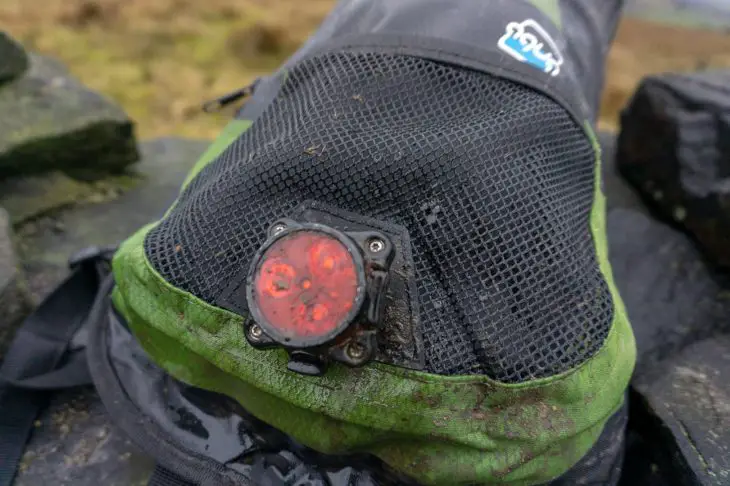
On The Trail
The first thing I noticed about the bag was that even though it’s fairly modestly sized, the lack of padding and the impractical internal pockets mean that your kit tends to rattle around inside it. For winter rides this isn’t such a problem as I tend to pack a bit of extra clothing, which acts as a baffle, but it’s a bit of an annoyance compared to other bags I’ve used, which generally seem to hold their contents more snugly.
The shoulder straps of the bag are nice and wide, with air vents cut into their foam core, and have a good 12in of adjustment. The waist belt also has a fair range of adjustment but the sternum strap was right at its limit with my 38in chest.
The waist strap is thin, and not the most comfortable I’ve used, but does feature a couple of extra loops to keep the loose ends tidy. The sternum strap buckle features a built-in whistle, but sadly the only way you’d be able to summon help with this is by setting it on fire and sending up some tiny smoke signals.
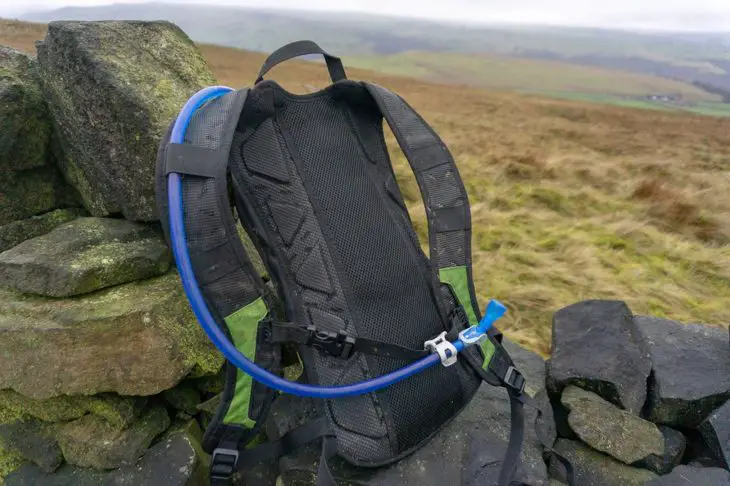
The back panel of the bag is thin and flexible, so it tends to bulge out when used with a full hydration bladder. This affects the Aquanought’s stability on your back, although it’s not designed to carry masses of gear, so it’s less of an issue than it could be.
Externally, the bag’s features are of limited usefulness. The outside mesh pocket sits directly in the line of all the crap thrown up from your back wheel, so there isn’t much you’d want to put in it, apart from a banana or a punctured inner tube. The position of the light mount also guarantees that, in the absence of a rear mudguard, whatever you attach there will end up being pebbledashed, and it’s easy for a light to pop off the thin loop when you put the bag down.
Of course though, the external pockets aren’t the reason you’d buy this bag – it’s all about the waterproofness, and on that front it does deliver. No matter how wet or filthy the ride was, not a drop of moisture invaded the inside of the bag.

Even after cleaning the bag with a hose, no water got into the main compartment. However, while the body of the bag may be waterproof, the back panel isn’t. The open-topped bladder sleeve took on a lot of water, which it then gradually cried out onto my kitchen floor. Wiping the outside of the bag is probably the best way to clean it, rather than breaking out the jetwash.
I didn’t test the Aquanought for long enough to expose any durability issues with the fabric, but I’d expect it to last well given the thickness and the ripstop weave. However the bag as a whole feels a bit underdesigned.
In particular, the internal storage of the bag could be much better, especially the removable organiser. One notably irksome aspect of the bag’s design is that unless you’re still using a Motorola Flip, none of the internal pockets are big enough to hold a smartphone. Your phone will definitely stay dry, but it’ll be rattling around in the bottom of the bag with whatever else is in there. Or in a separate case, which kind of defeats the point.
Overall
For a fairly expensive pack, the Aquanought has a whiff of budget about it. The thin, shapeless back panel, single-slider zip and lack of water bladder all make it seem like it should cost less than it does. It’s also a bit short on capacity for longer rides – you can take tools, spares, a small amount of food, and one extra item of clothing, but you’d be hard pressed to cram anything else in there.
Having said all that, there aren’t many fully waterproof riding packs on the market. The Alpkit Gordoun has been around for a while, and comes in at a much lower price point, but it’s also made from a less durable fabric, and is a much bigger bag. The Aquanought is essentially a small drybag that can hold a hydration bladder, rather than a fully fledged backpack. It will certainly keep your kit dry – it’s just a shame that more effort hasn’t been put into the bag’s other features.
Review Info
| Brand: | Polaris |
| Product: | Aquanought Hydration Backpack |
| From: | Polaris, polaris-bikewear.co.uk |
| Price: | £89.99 |
| Tested: | by Antony for 1 month |
Comments (6)
Leave Reply
Post Comment
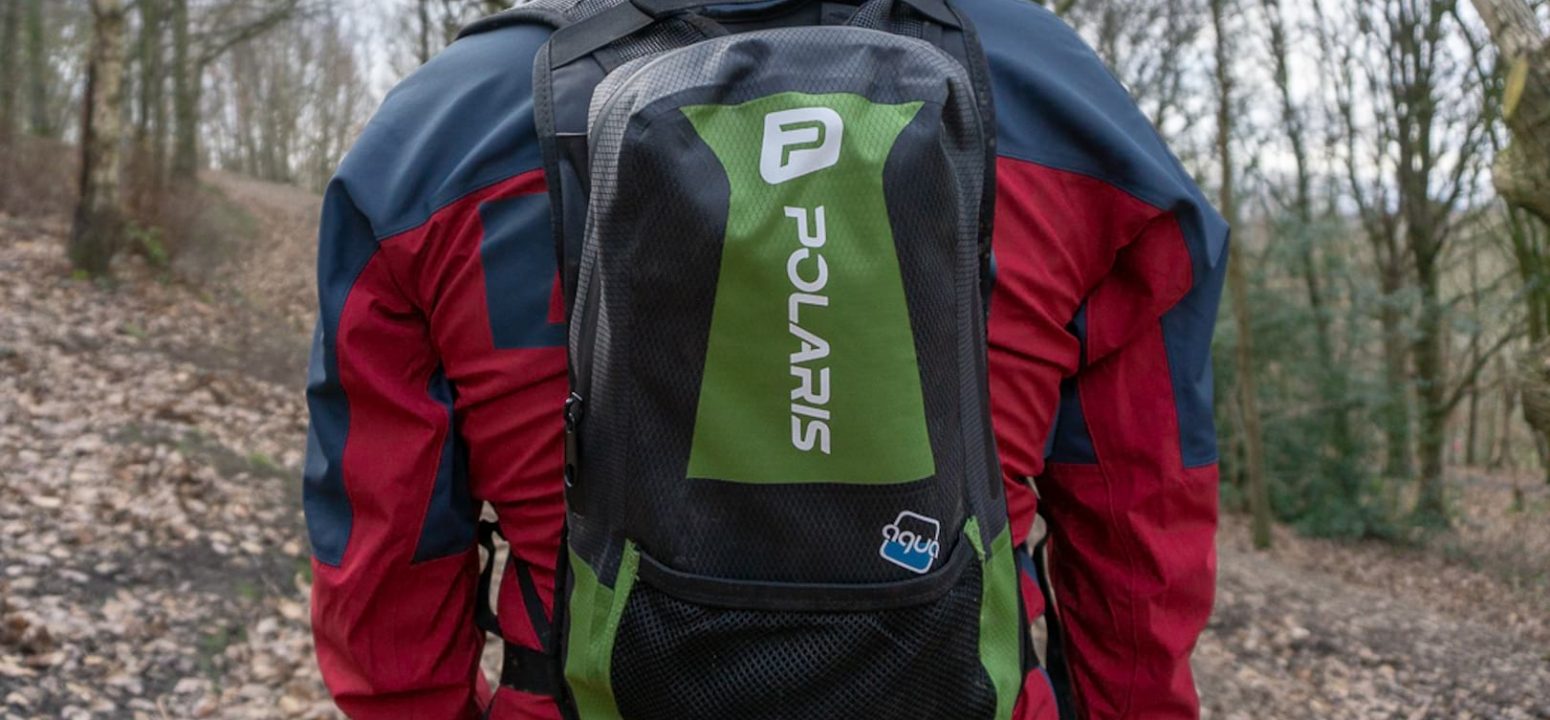

“…miserable ritual of removing everything from my backpack, drying it all out, then replacing it, in the full knowledge that I’ll probably have to do the same again next ride”. Not if you use a back pack cover.
Good shout, but then you have to take it off when you want to get something out. Waterproof backpack covers are a bit like overtrousers – their practicality is offset by the attendant faff.
“attendant faff” ? I know experiences vary etc. but seriously how often do you have to go into your pack on a ride, for me once (definitely, for food!), maybe twice at most. So no faff.
or put everything in a sturdy plastic bag or drybag, then inside your existing backpack.
Currently £65 on their web-site.
dogbone, indeed it is. We always go on RRPs for reviews though.